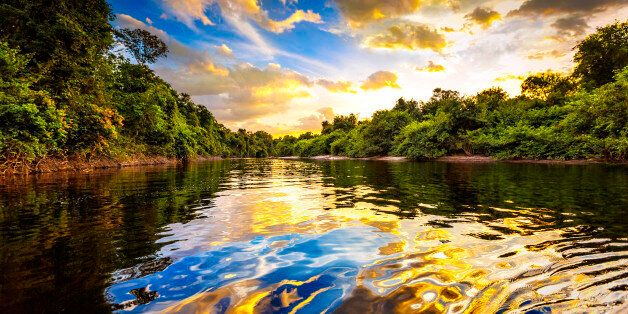
Tamshiyacu, a village on the Amazon river in the far north of Peru, is home to a story familiar to people in Cambodia, Mozambique, Papua New Guinea and many more countries. This week I got to hear that story first hand.
Like in so many places around the world, climate change and environmental issues are having a huge impact on the lives of local people in the Peruvian Amazon. A century ago this remote part of Peru was transformed by the rubber boom and now people are being forced off their land to make way for the latest 'booms'; biofuels, hardwoods and mineral extraction.
I am here in Peru to push world leaders to act on climate change at the UNFCCC climate change negotiations but away from the diplomats and the conference centre, I went to listen to the people being directly affected by another area Oxfam works on, land rights.
The People's LandTo get to the village of Tamshiyacu, I travelled south by boat out of the Iquitos, the main city in the area. Deforested, cleared land now lines much of both banks of the river on the route.
In the village I met with women, men and community leaders to discuss the challenges they're facing as the environment around them is increasingly put under pressure.
Right now, a Malaysian biofuels company has started buying land near the village. They are planning to start a palm oil plantation on this land and crucially, they are also aiming to expand into areas of pristine, primary forest - hunting and fishing areas that the people of Tamshiyacu depend on.
Biofuel developments such as this offer little overall in the way of climate progress but actually have a huge effect on the lives of millions, forcing poor people off their land and driving food insecurity. Unbelievably, in 2012 the amount of food consumed as fuel by G8 countries annually could have fed more than 441 million people for a year.
In the face of this threat to their land, the people of Tamshiyacu are standing up to huge foreign companies and political elites. The vision and courage to stand up to further deforestation and land grabs was a privilege to see. The passion and commitment, particularly from the women leaders I met with, is a real source of inspiration for me.
For nearly two decades, Oxfam has been working with local people to offer support in their struggle to acquire land titles but the people here who I met, people whose lives and culture are so intimately tied to this land, have repeatedly had their attempts to acquire formal land titles slowed down and blocked by bureaucracy and corruption.
A New ChallengeNow, the people of Tamshiyacu - like millions around the world - are also facing a new threat. Climate change. Not only is over 80 percent of the production of staple food in Peru extremely vulnerable to droughts but 50% of the Peruvian population is also at risk of hunger. Climate change is putting new strains on food supplies and causing hunger right now.
Oxfam will continue to work with people around the world to stop corporations and governments from exploiting their land. We're also going to push world leader to take the action we all need to tackle climate change.
ChangeGlobally people are standing up and calling for change. In September, we saw the world's largest ever climate mobilisation with more than 400,000 people marching in the streets of New York City alone. This week we've seen Latin America's largest ever climate mobilisation on the streets of Lima.
Here in Lima, as in many places globally, the reasons to go green clearly also go far beyond a moral argument. Peru could increase its GDP by nearly 1 percent more than business as usual while halving its emissions at the same time. What's good for the environment is ultimately good for people.
The negotiations this week in Lima are a crucial stepping stone on the road to the next climate summit in Paris next year, where a global climate deal is set to be agreed.
From the Amazon and all corners of the world, the message is clear: it's time for our leaders to step up and lead.